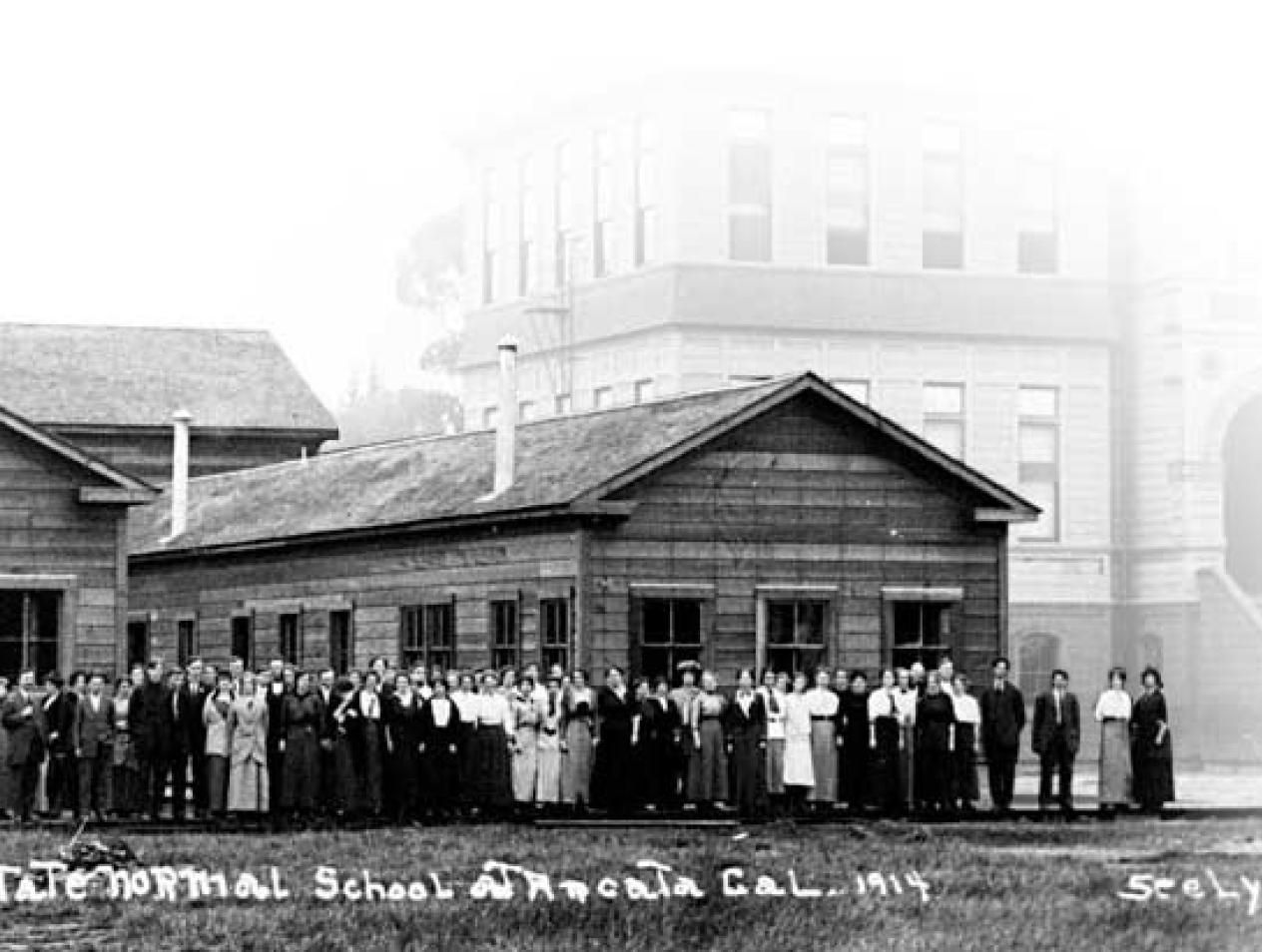Breadcrumb
More than a Century of Humboldt History
On June 16, 1913, California Governor Hiram Johnson signed the law establishing “Humboldt State Normal School, for the training and education of teachers and others in the art of instructing and governing the public schools of this state.”
The first classes at Humboldt State Normal School began on April 6, 1914, with 62 students in a small building near the rural bottoms of Arcata. That December, Susie Baker Fountain became the first graduate and by May of 1915, the school would celebrate its first graduating class of 15 women. The school was established to meet the demand for qualified teachers, which were needed following a state-wide education statute. Accordingly, the school offered four teacher-preparation programs all based on the student’s own experience levels.
Local donations, including 55 acres of land by Arcata’s William Preston and the Union Water Company, ensured Arcata would be the school’s home. Within a decade, the school built the administration building. Today, it is known as Founders Hall and is Humboldt’s oldest and most recognized building.
World War I made a considerable impact on the school, nearly causing its demise. Enrollment, which reached a high of 159 in 1917, dropped to 59 in 1920.
In the 1920s, the school changed its name to Humboldt State Teachers College and Junior College and the curriculum broadened to include foreign languages, physical education, natural sciences, mathematics, philosophy, English, and the social sciences.
Expansion and Revitalization
Not long after, the school became Humboldt State College and the curriculum expanded to include a Bachelor of Science degree in education and liberal arts degrees in economics and business. Speech and home economics were soon to follow.
The Great Depression set in during the 1930s. Times were so tough that President Arthur Gist gave students permission to submit IOU’s for one semester to cope with rising tuition fees.
World War II had a major impact on campus and enrollment dropped from 436 in 1939 to 159 by 1945.
With the end of the war came a revitalization as enrollment boomed and the campus began offering programs in forestry and agriculture. Expansion continued in the 1950s. In 1974, the school was renamed Humboldt State University.
By the mid-1980s, Humboldt's ’s enrollment hit 6,200 and Business was the most popular major on campus. In the 1990s, the campus organized into three constituent colleges: The College of Natural Resources, the College of Professional Studies, and the College of Arts, Humanities & Social Sciences.
Northern California’s First Polytechnic Institution
Backed by California’s historic $458 million investment, the California State University Board of Trustees approved a new designation and name for Humboldt State University in 2022 —California State Polytechnic University, Humboldt. Cal Poly Humboldt, as the University is known informally, is only the third polytechnic institution in the state.
Today, Cal Poly Humboldt is the northernmost campus in the California State University system. Students live and learn in one of the world’s most beautiful natural environments. The University offers dozens of majors and minors, including programs in natural resources that are considered among the best in the nation. Hands-on learning is an important part of a Cal Poly Humboldt education, with students participating in lab research, fieldwork, volunteer work, and internships. Humboldt’s curriculum demonstrates a long-standing commitment to social and environmental responsibility and to the local community, providing students an extraordinary college experience.






